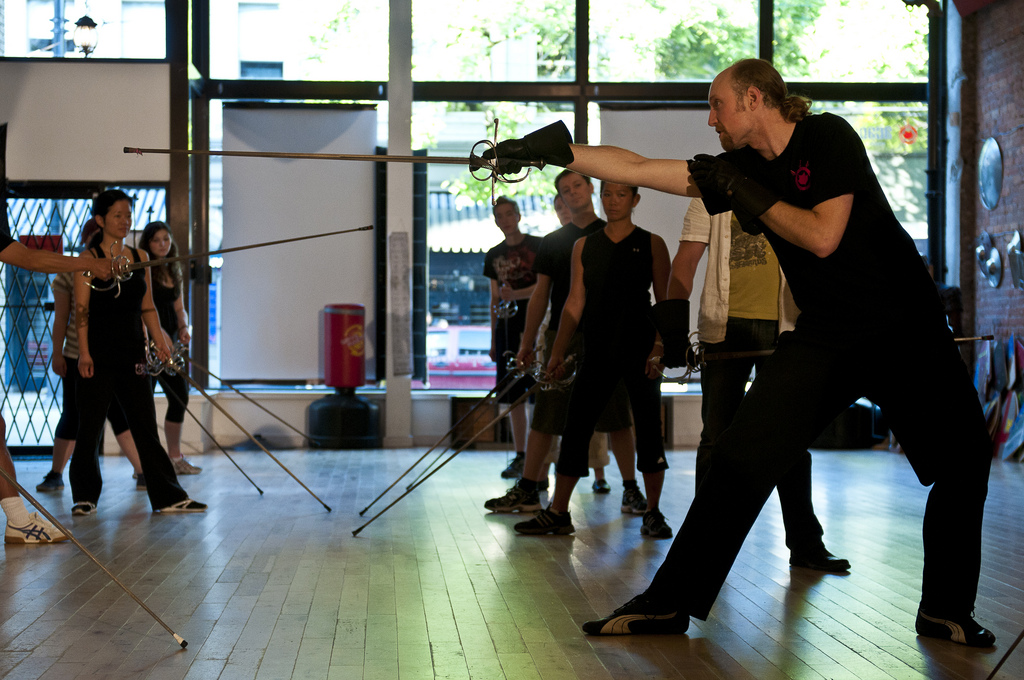(A version of this post was originally posted on the Duello.TV blog)
In swordplay: Your sword is getting set aside while you attack. Your parry is not succeeding in closing the line.
In dance: You’re failing at a lift. Your follow is misreading your lead. You’re unable to complete a smooth turn or spin.
Poor results with a finish or result position from a movement often lead us to analyze and attempt to correct through the movement itself; perhaps you try to parry with your sword a litter harder or deeper, or you try to lift your dancer partner with more muscle or to lead them a little more firmly. However many problems in a movement and its results start much earlier, they start from the position of your setup.
The tunnel is a concept to help you train quality of movement from beginning to end. Every movement you make has a start position (the entry to the tunnel), an end position (the exit of the tunnel), and the movement (the tunnel). Before entering the tunnel its essential that the quality of your starting position reflect the quality you desire from your end position. If you start from a weak base, poor ground connection, poor balance, or weak alignment, when you exit the tunnel your finish position will have a hard time being any better.
Next time you’re diagnosing a movement result, see if you can connect the challenge at the end to a problem that started at the beginning. Ensure the highest quality of starting place from which to launch your action and you may find the problem at the end clears up more easily.
